Reusable Wrapping Fabric
Place the gift or item to be wrapped, diagonally in the middle of the Furoshiki square.
The length of the diagonal should be around 3 x the length of the gift as shown in image 1 below.

To wrap a regular sized 1 wick candle, small book, journal or similar sized item, the recommended wrapping fabric size is 45cm x 45cm
To wrap a large 3 wick candle, a larger book or a standard bottle of wine or Champagne, the recommended wrapping fabric size is 70cm x 70cm.
Smaller or larger bespoke sizes are available. Please contact us with your request and we will do our best to help.
Click here to view all Furoshiki fabric gift wrapping & shop.
Your fabric gift wrap will be winging its way to you by Royal Mail 24/48 hour tracked service within the UK which means it will be tracked up to the point of delivery to your door (or whoever else's door you want to gift it to).
Carriers for delivery to Europe and the rest of the world will be shown at the checkout stage.
The cost of delivery will be calculated at the checkout stage with free shipping within the UK for orders over the value of £50.
Orders placed Monday to Thursday will be dispatched the next working day, orders placed on Friday, Saturday and Sunday, will be dispatched on Monday.
Please note that each fabric wrap is hand cut and machined by hand, so slight variations in finish and minor imperfections are possible, as each piece is unique. Read about what makes us different - your Eazywrap is a truly individual work of art!
Returns are accepted for a full refund, within 14 days of tracked receipt if your Eazywrap is not as you expected.
Please contact us upon receipt of your fabric gift wrap if this is the case.
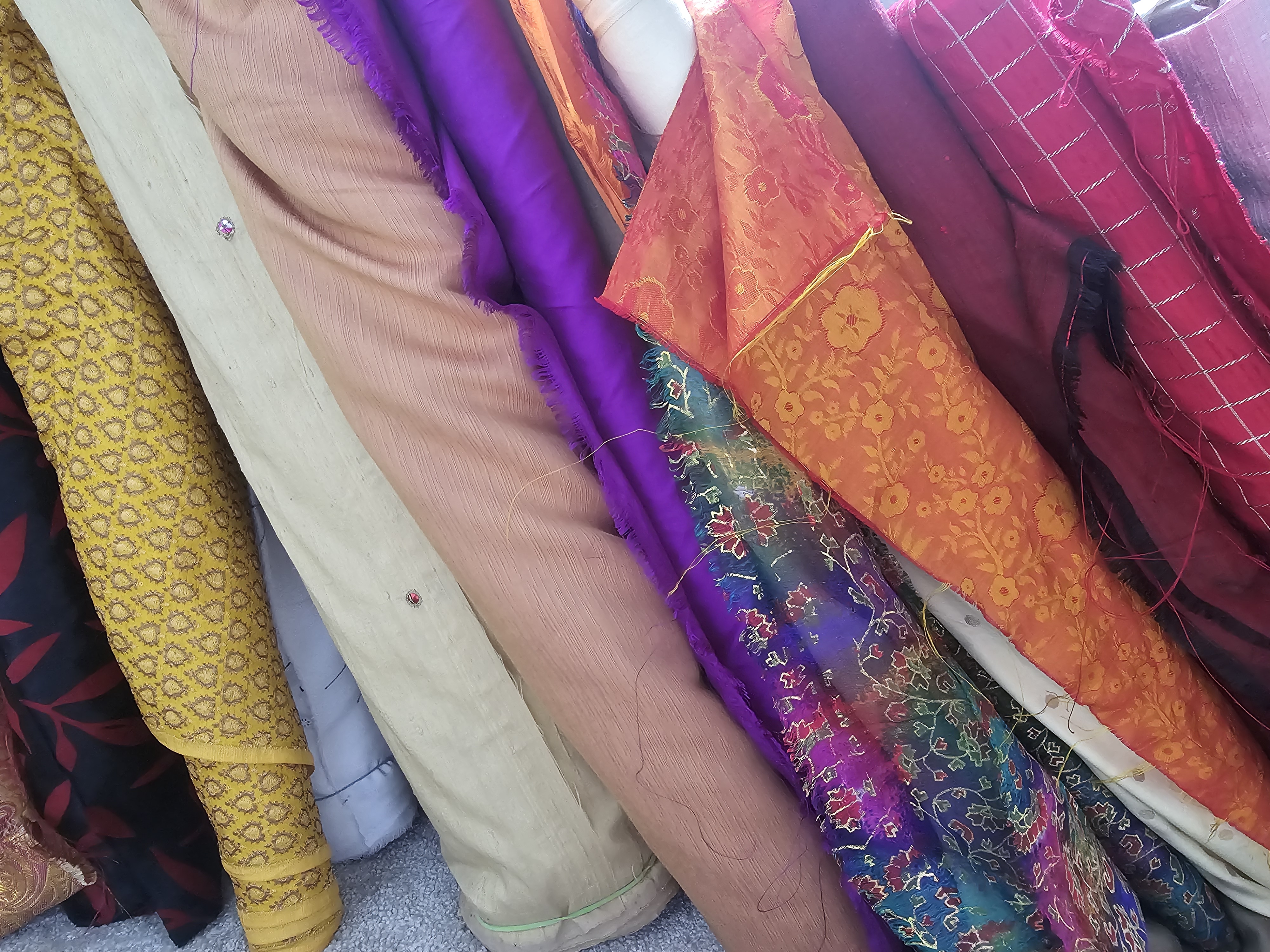
Modern life is hectic.
How can life be made easier, and save paper waste at the same time?
Simple! (she said) Take unwanted textiles and repurpose it into something useful.
Cue Eazywraps!
It makes little sense to manufacture more fabric to be used as Furoshiki gift wrap when there are so many tonnes of unwanted clothes and textiles that end up in landfill or incinerated, some are even discarded unused!
So this is us trying to make your life easier, and our environment better.
Click here to view all Furoshiki fabric gift wrapping & shop.
Any fabric, clothes or 'deadstock' (surplus materials, discarded by manufacturers), that is no longer used as it was intended, is repurposed as Eazywraps' Furoshiki gift wrapping fabric.
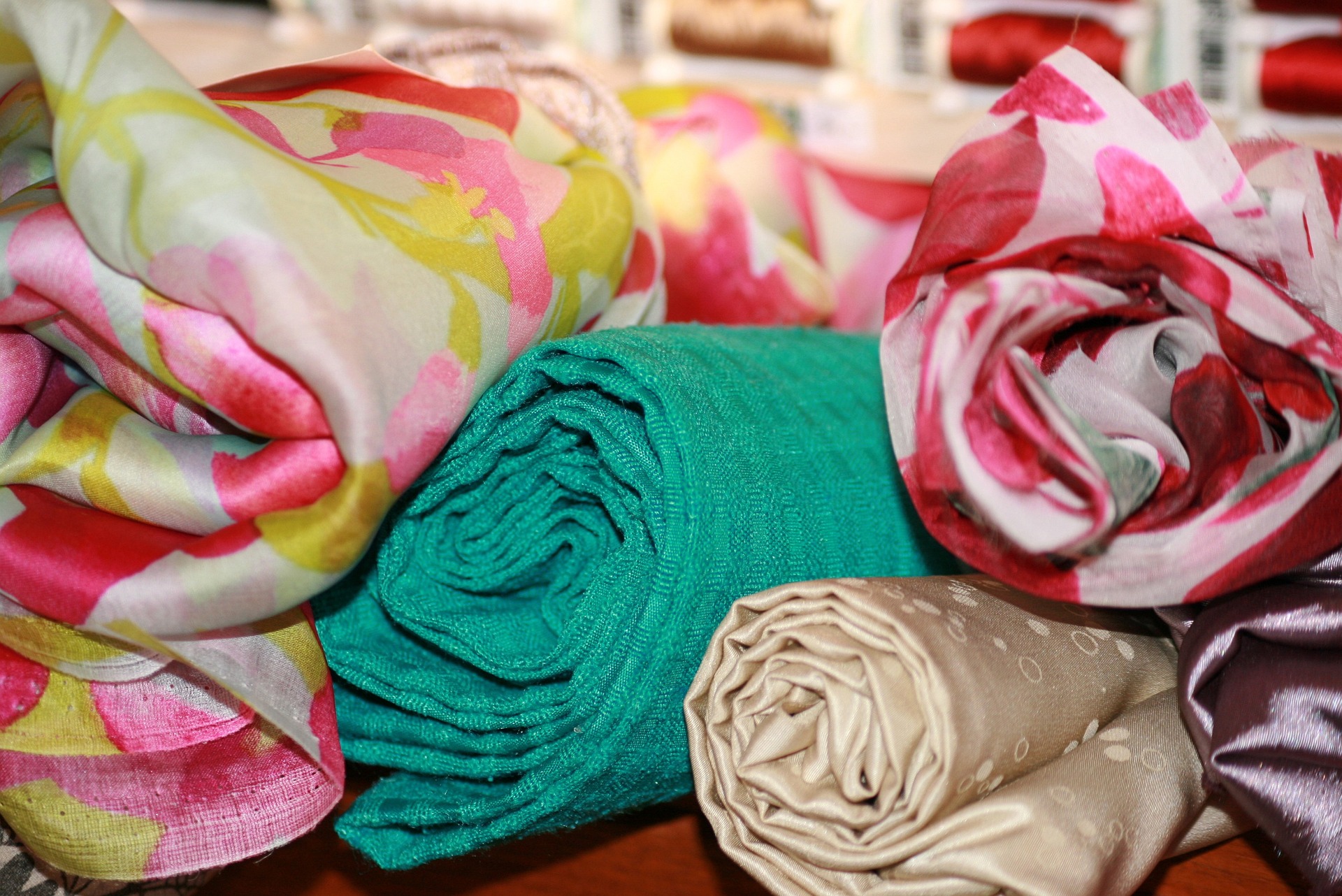
- Waste fabric has been sourced from a website in the UK that specialises in deadstock.
- Reclaimed curtains/clothes that have been painstakingly unpicked by my fair hand.
- An 'Aladdin's cave' shop in London, that stocks everything recyclable as well as arranging community projects.
- Preventing fabric ending up in landfill, a shop closing down that had to re-home their stock.
Click here to view all Furoshiki fabric gift wrapping & shop.

To us, it makes sense to repurpose unwanted fabric that has already been manufactured, destined to be thrown away, instead of wasting more water and resources manufacturing new materials to use as fabric gift wrapping.
One of the recommendations by the Environmental Audit Committee, in their clothing consumption and sustainability report, calls to "ban incinerating or landfilling unsold stock that can be reused or recycled"
Click here to view all Furoshiki fabric gift wrapping & shop.
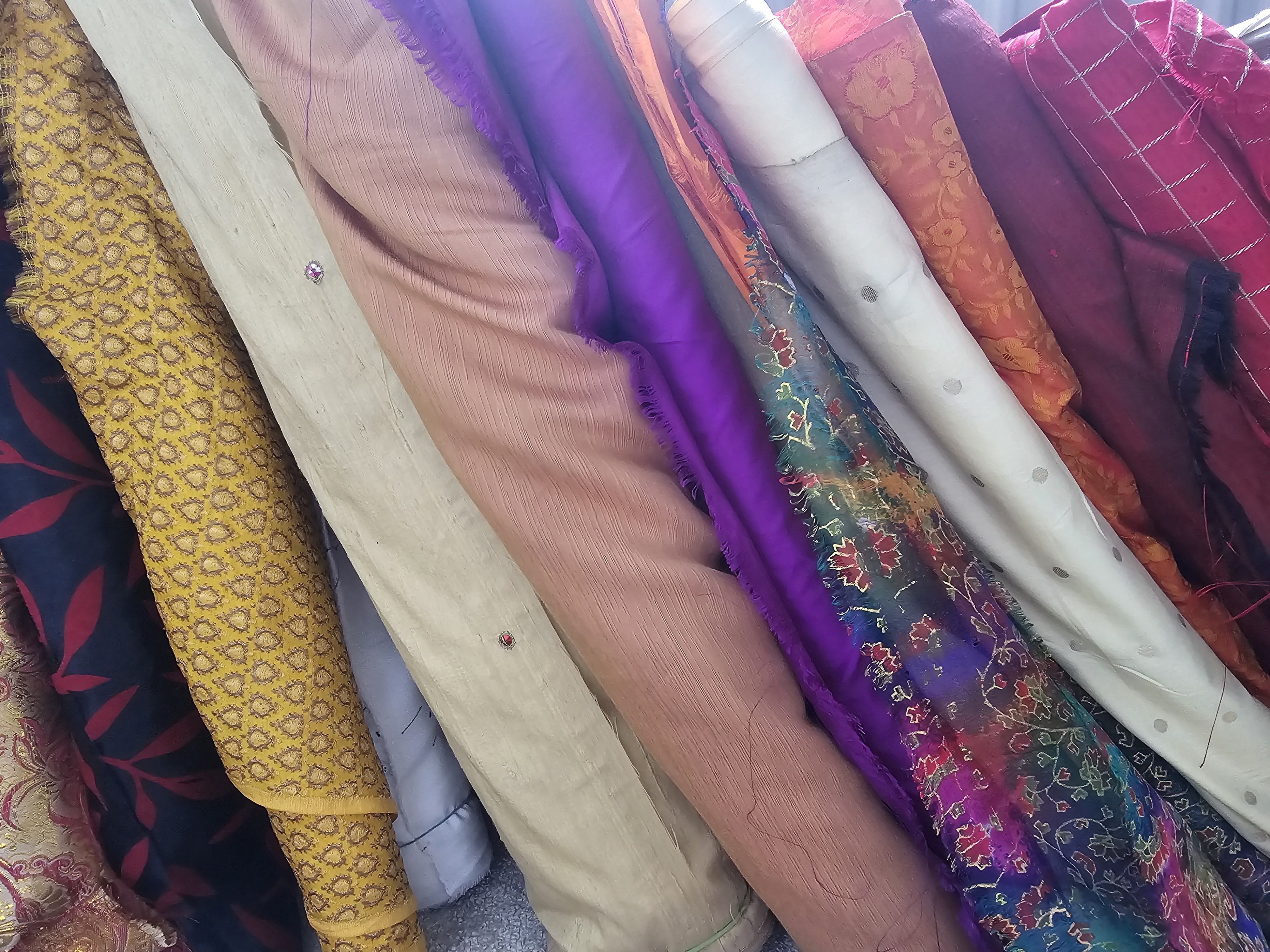
Reclaimed fabric refers to fabric that has been saved from being thrown away into landfill or ending up being incinerated.
Once saved, it is then repurposed into something useful and ideally reusable (in this case into Eazywraps, gift wrapping fabric).
Click here to view all Furoshiki fabric gift wrapping & shop.
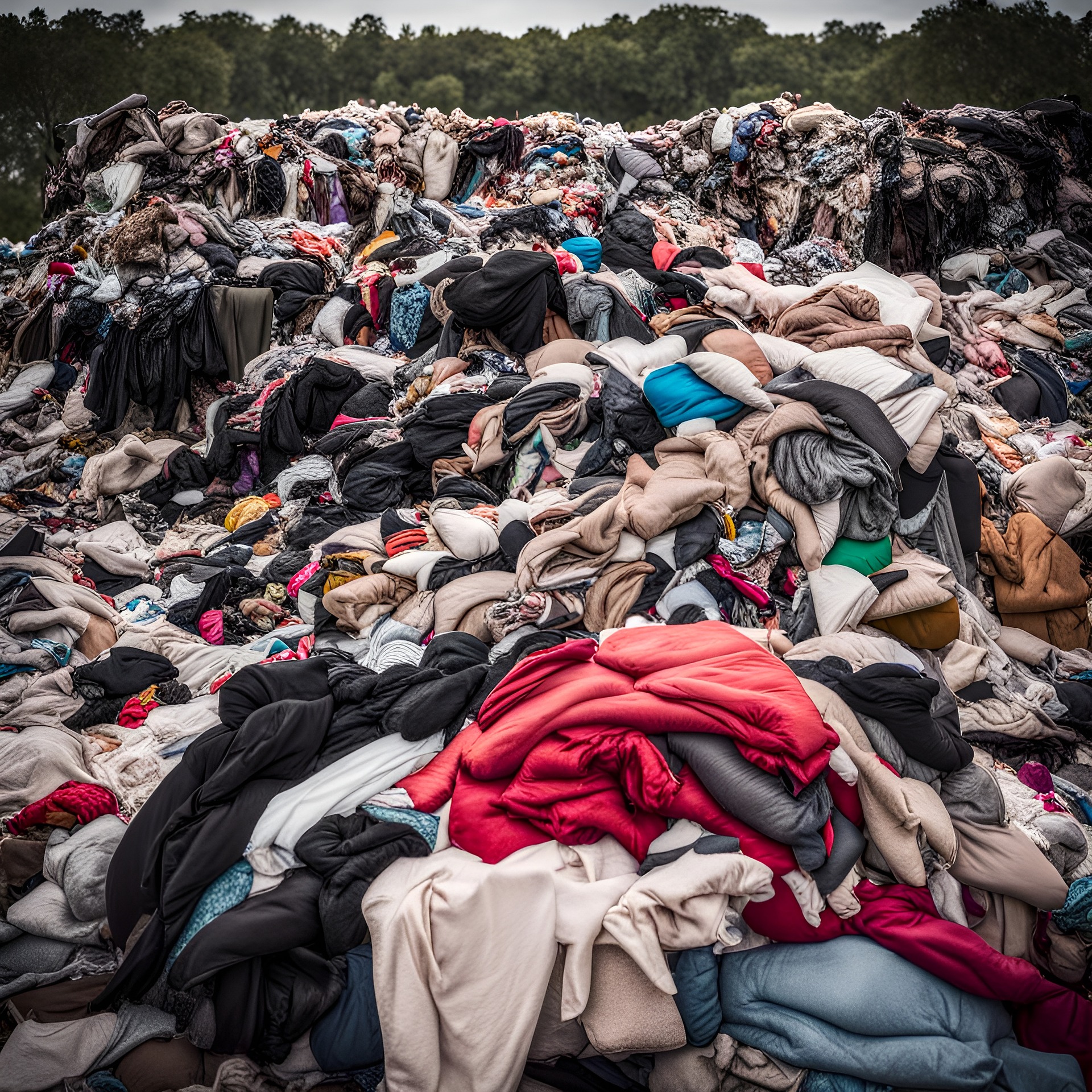
Textiles can take up to 200 years to decompose.
By recycling textile fabric and repurposing it into reusable Furoshiki fabric gift wrap, it will continue to bring joy wrapping gifts and many other items for years to come instead of sitting in landfill!
The Environmental Audit Committee, in their clothing consumption and sustainability report, calls are made to "end the era of throwaway fashion"
Click here to view all Furoshiki fabric gift wrapping & shop.
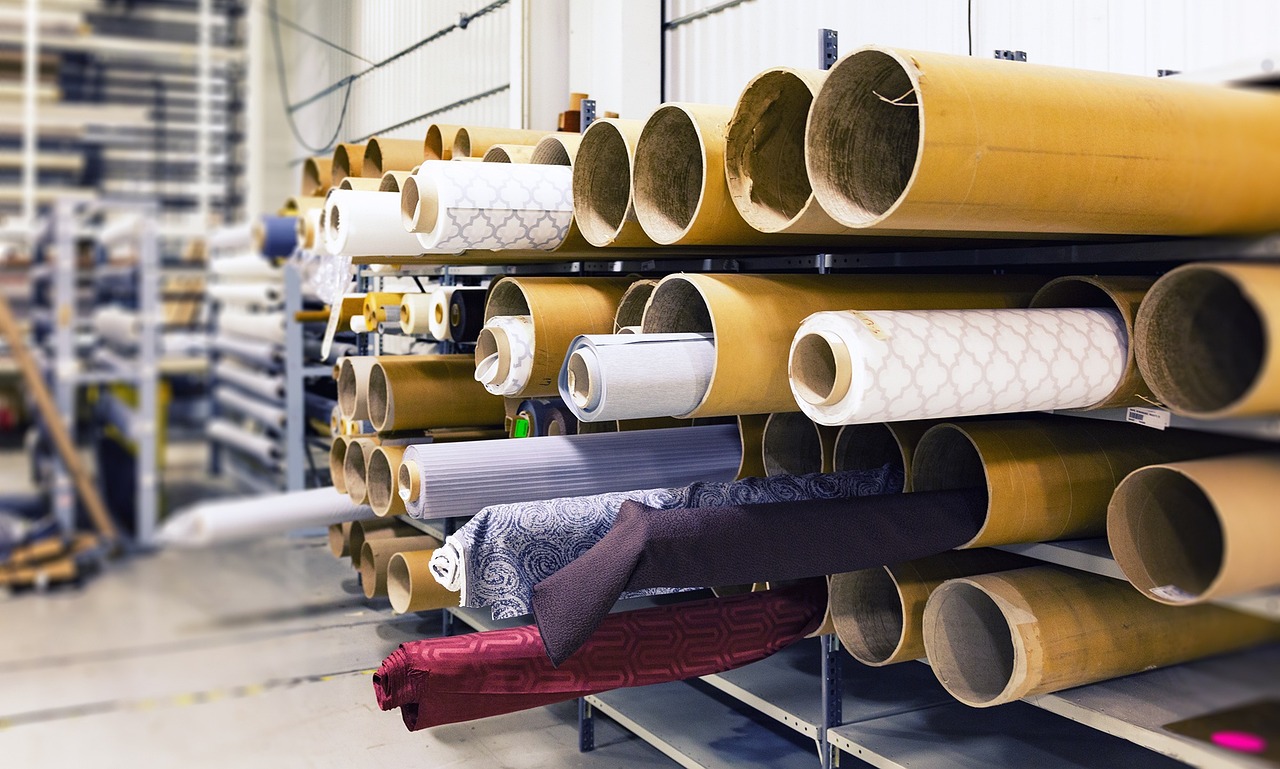
It is a labour of love!
Made in the UK, the family owned and run factory making your Furoshiki is located within South East London. Being such a helpful, warm and welcoming bunch, visiting is always a pleasure, never a chore!
Did I mention that I love my job?
As we use eco-friendly, unwanted fabric, (not purpose made) some of the fabric is only available in small quantities, so for it to arrive at the factory in the best condition and make it easier to work with, it is put onto a cardboard roll (called a pole).
If the fabric has been folded, it may require ironing to ensure accurate sizing when cut.
The fabric is cut to size by hand (easier said than done when it comes to some of the slippery silky/satin materials) and overlocked by a super-skilled person with a sewing machine to prevent the edges fraying.
Finally, each piece of Furoshiki fabric gift wrapping undergoes quality control and an environmentally friendly Eazywrap ink stamp is used in place of manufacturing a branding label.
Click here to view all Furoshiki fabric gift wrapping & shop.
Eazywraps is based on Furoshiki, a traditional Japanese wrapping fabric. A square piece of cloth that has been used for centuries to wrap gifts, carry possessions, as well as to protect and decorate valuable items. Its history dates back to at least the Nara period (710-794 AD), when Nara was Japan’s capital city. Originally called “tsutsumi" which means bundle/package/present - as represented by the Japanese symbol for tsutsumi – a baby wrapped in the mother's womb. 包
There is conflicting information as to when the name "Furoshiki" was given to the wrapping fabric. It was either during the Muromachi period (1338–1573 AD) or during the Edo period when bathhouses became available to the general public.
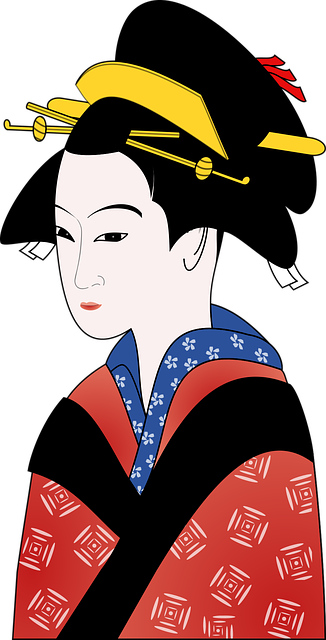 One indisputable fact is that Furoshiki can be broken down into two words: "furo" meaning bath and "shiki" meaning spread. Legend has it that during the Muromachi period, Shogun Ashikaga used to invite the feudal Lords to visit his steam bathhouse, where they would wrap their kimonos in silk Furoshiki, enabling their clothes to be easily identified by their family crest on the wrapping fabric. When they emerged from bathing, they would unwrap the Furoshiki and use it to lounge on (which must have been most uncomfortable!) and to stand on when getting dressed. The original version of the towelling ‘bath sheets’ we use today.
One indisputable fact is that Furoshiki can be broken down into two words: "furo" meaning bath and "shiki" meaning spread. Legend has it that during the Muromachi period, Shogun Ashikaga used to invite the feudal Lords to visit his steam bathhouse, where they would wrap their kimonos in silk Furoshiki, enabling their clothes to be easily identified by their family crest on the wrapping fabric. When they emerged from bathing, they would unwrap the Furoshiki and use it to lounge on (which must have been most uncomfortable!) and to stand on when getting dressed. The original version of the towelling ‘bath sheets’ we use today.
During the Edo period (1603-1868 AD), Public bathhouses (called a sento) became popular. Furoshiki was used to wrap and carry clothes and other personal belongings to and from public baths. People would place their clothes and items on the Furoshiki, tie the corners together, then carry the bundle on their backs or over their shoulders.
Over time, Furoshiki's usage expanded beyond the bathhouses, becoming a versatile everyday tool essential to tradespersons, merchants, and the working class to carry or store their goods.
During the Meiji Period (1868-1912): : The village of Edo was renamed Tokyo and' common people' were now allowed to use a family crest on their Furoshiki too.
Furoshiki gained even greater popularity as it became associated with cultural practices and etiquette. It was often used to wrap and present gifts, with the way the Furoshiki was folded and tied conveying different meanings. Playing an important part in some Japanese ceremonies, the cloth and its wrapping techniques became ingrained in Japanese culture.
Furoshiki are made from silk, cotton, or other materials, and their designs can be plain or intricate, depending on the intended purpose and the owner's preferences. The economically disadvantaged early versions were cheaper, simple and utilitarian in nature, whereas cloths for the nobles were adorned with intricate designs and patterns that reflected the wearer's status, tastes and bank balance!
In the mid-20th century, particularly after World War II, as modernization and convenience took hold, the use of Furoshiki declined, and more disposable packaging materials became prevalent. People had to be frugal and paper bags became popular due to scarcity of the more traditional textiles.
In 2005. through the dedication and hard work of a Kenyan activist, Wangari Maathai, a large corporation, and Japanese newspapers, The MOTTAINAI Campaign was born. It is a movement in Japan championing the 4 R's: Reduce, Reuse, Recycle—and Respect. Mottainai is often translated as “What a waste!”
In 2006, the Japanese Ministry of the Environment launched a Furoshiki Reuse Campaign to promote the use of Furoshiki as an eco-conscious choice and an environmentally friendly alternative to single-use bags and wrapping materials.
In more recent years, there has been a resurgence of interest in Furoshiki as part of a conscience shift toward sustainability and reducing waste in Japan. The idea of reducing waste and utilizing one cloth for multiple purposes regained popularity. Furoshiki’s eco-friendly qualities have gained international attention in the 21st century as a stylish and environmentally friendly way to wrap gifts, carry items, and reduce the use of disposable packaging, with the added versitility it offers in terms of wrapping awkward shapes. For examples of use options click here.
Traditionally, when the wrapping cloth is used to wrap a gift, the recipient of the gift returns the Furoshiki back to the giver of the gift. To read more about this concept click here.
Today you will find Furoshiki on show in Museums around the world, together with woodblock prints, showing the everyday uses of the Japanese wrapping fabric.
In the old Japanese capital city of Nara, 9,000 treasures are preserved within the wooden structure of Shōsō-in. Amongst the artefacts are pieces of tsutsumi. The treasure house is not open to the public, however artefacts are displayed within special exhibitions at the Nara National Museum.
Using Furoshiki is more than just wrapping a gift or carrying your possessions, you are enveloping objects with meaning and thoughtful purpose.
Click here to view all Furoshiki fabric gift wrapping & shop.